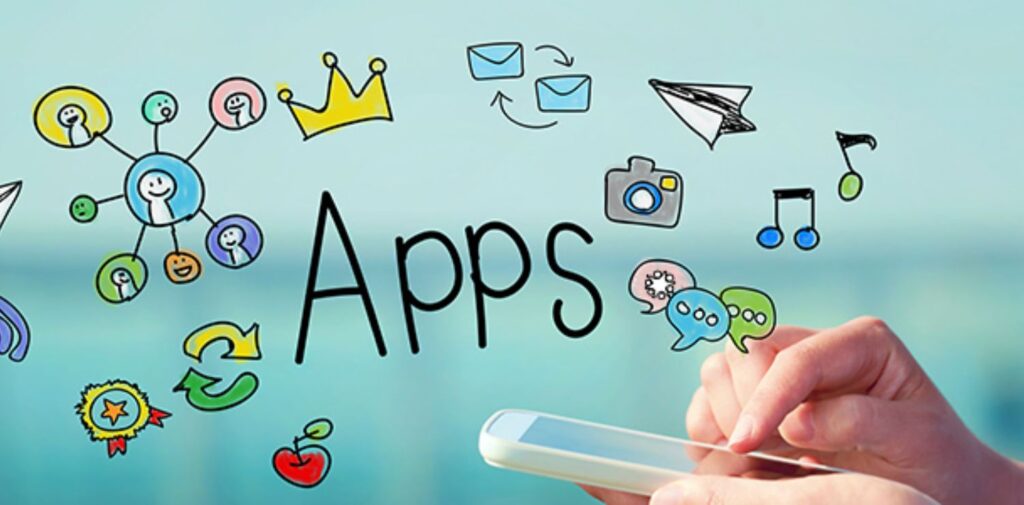Mobile apps are everywhere! From games to educational tools, entertainment, and even shopping, apps make our lives easier and more fun. Have you ever wondered how apps are made? Well, you’re in the right place! In this article, we’ll guide you through the process of creating a simple mobile app. Don’t worry – no coding experience is required. Whether you’re a student or someone who just loves technology, you’ll find this guide helpful and fun.

Understanding the Basics of Mobile Apps
Before we dive into the steps, let’s first understand what a mobile app is. A mobile app is a software application designed to run on smartphones and tablets. You can download these apps from app stores like Google Play for Android or the Apple App Store for iPhones. There are two main types of mobile apps: Native apps (built specifically for one type of phone) and Web apps (which you use through a web browser on your phone).
For now, let’s focus on how to make a simple app for your phone!
Step 1: Plan Your App Idea
Before you start creating your app, the first thing you need is an idea. What do you want your app to do? Think about what problem your app can solve or what fun things it can offer to people. You could make a game, a to-do list app, a photo editing tool, or even an app that tells jokes!
Start by answering these questions:
- What is your app’s main goal?
- Who will use your app?
- What special features will your app have?
Let’s say you want to make a “Daily Reminder” app that helps users remember important tasks like homework or appointments. Your app could show simple notifications every day with reminders.
Step 2: Choose an App Development Tool
Once you have your idea ready, it’s time to pick a tool that will help you make your app. Since we are making a simple app, you don’t need to learn complicated coding. There are many app-building platforms that let you create apps without any programming knowledge. These platforms use drag-and-drop methods, making it easy for beginners.
Here are some popular platforms you can use:
- Appy Pie: This is a very beginner-friendly platform that lets you create apps with simple drag-and-drop features.
- Thunkable: Another great tool that is easy to use, even for kids, to create apps without any coding.
- Kodular: A platform that’s perfect for beginners, offering many options to customize your app.
Choose one of these platforms and create an account to get started!

Step 3: Design Your App
Now that you have your idea and a development tool, the next step is to design your app. The design is how your app will look, including its colors, buttons, icons, and layout. A good design is important because it helps users enjoy using your app.
On most app development platforms, you will find design templates that you can customize. You’ll be able to choose the layout for your app, pick colors, and add buttons. For example, if you’re creating the “Daily Reminder” app, you could add a simple screen with a “Set Reminder” button. When users click it, they can choose what task to be reminded about.
Take your time to make sure the design is clean, simple, and easy to understand. You don’t want to make it too complicated. Remember, the simpler the better!
Step 4: Add Features and Functionality
Now comes the fun part: adding features! This is where your app starts to come to life. You can add different types of functionality to your app, such as buttons that do something when clicked, forms to enter text, and notifications to remind users of their tasks.
For example, in the “Daily Reminder” app, you could add the following features:
- Text Input: Users can type their task into a box.
- Save Button: Once they’ve typed in the task, they can click “Save” to add it to the list of reminders.
- Notification: A daily pop-up will remind the user of the task.
The development tool you’re using will have pre-made blocks or modules that you can use to create these features. Just drag and drop the necessary blocks into your app. It’s like building with Legos!
Step 5: Test Your App
Once your app is ready, it’s time to test it. Testing is super important because it helps you check if everything works the way you want it to.
On most app-building platforms, you can test your app right away on your computer or phone. Try using all the buttons, entering text, and checking if the app behaves as you expect. If you find something that doesn’t work, go back and fix it. Maybe you forgot to add a button, or a notification isn’t showing up properly.
Keep testing until you’re happy with how your app works. If you have friends or family around, ask them to test your app as well. Fresh eyes can often spot things you might have missed.

Step 6: Publish Your App
Once you’ve finished testing and fixing any bugs, it’s time to share your app with the world. If you created your app using a platform like Appy Pie or Thunkable, they will guide you through the process of publishing your app to app stores like Google Play or the Apple App Store.
Before you can publish your app, you will need to create a developer account with Google Play or Apple. There may be a small fee to register, so ask an adult for help if needed. Once you’re registered, you can upload your app and wait for it to be approved.
If your app is approved, it will be available for everyone to download and use. Imagine, your very own app on the phone of people around the world!
Final Thoughts
Making a simple mobile app might sound tricky, but it’s actually quite easy and fun. By following these simple steps, you can turn your idea into a working app without needing to be a coding expert. All you need is a little creativity and some patience.
Remember, the key to making a successful app is starting with a good idea, designing it well, and making sure it works perfectly. Don’t be afraid to experiment and try new things. Who knows? Maybe you’ll come up with the next big app!
So, are you ready to make your first app? Grab your idea, pick a platform, and start creating. The world of mobile apps is waiting for you!




